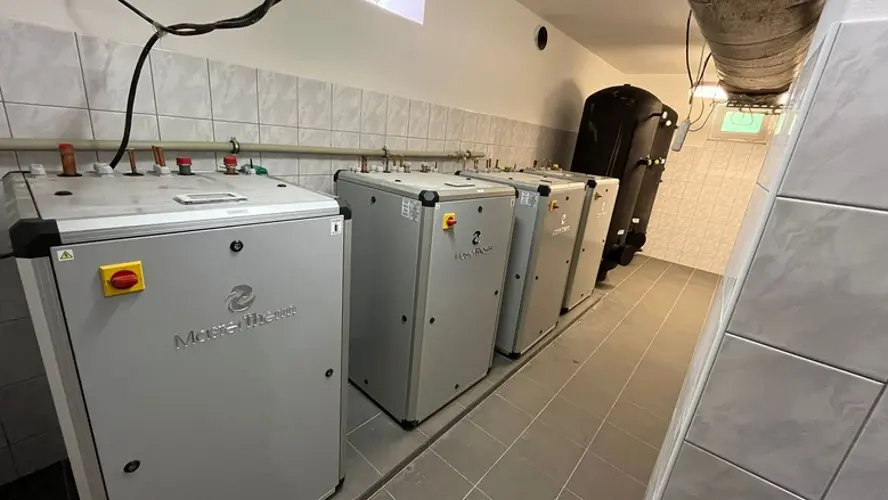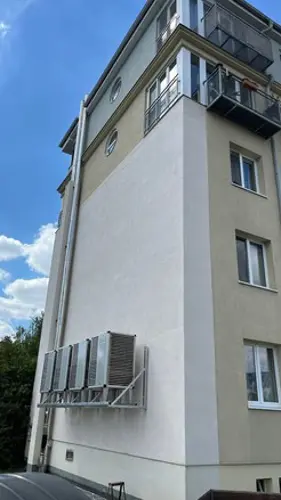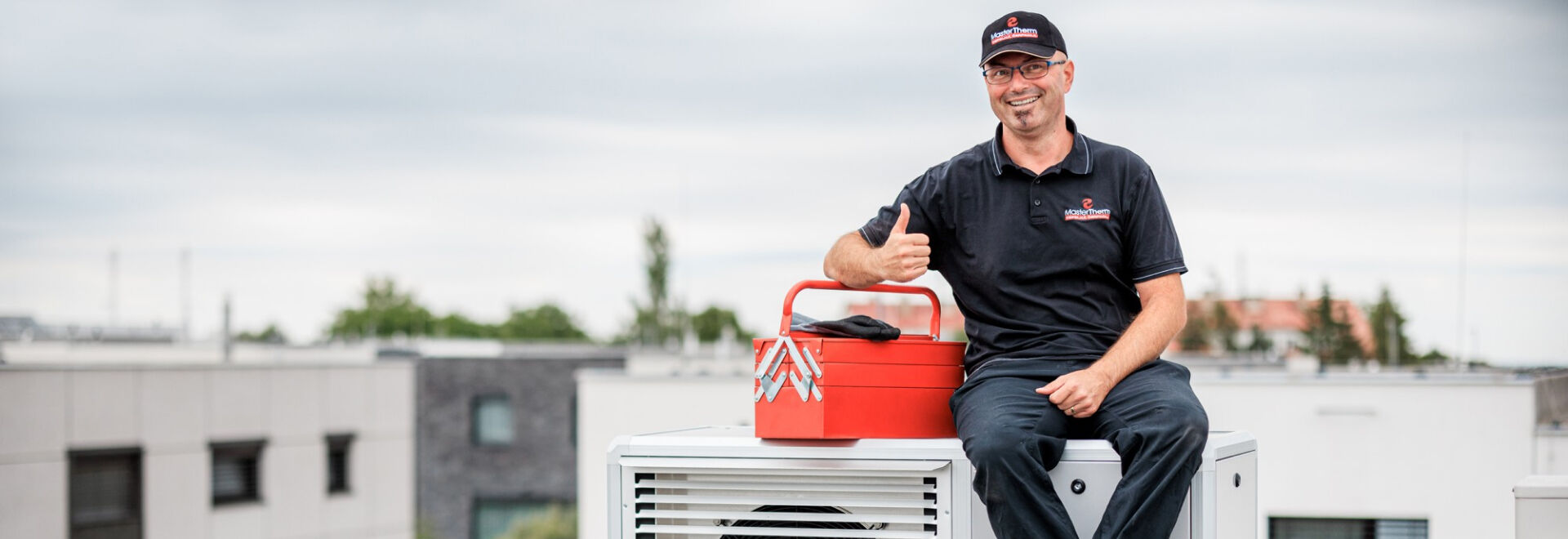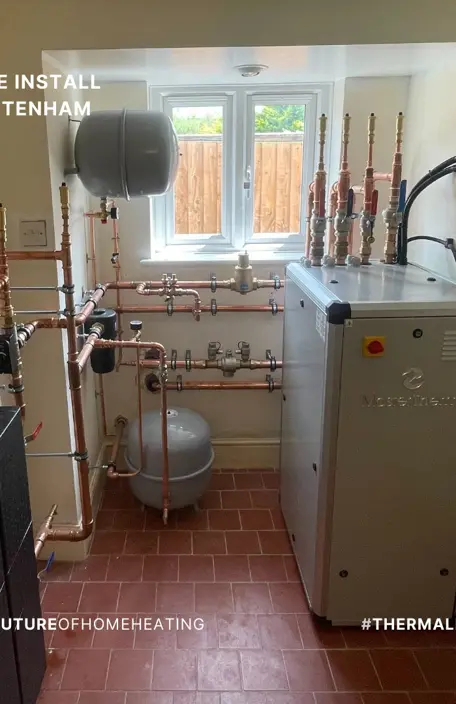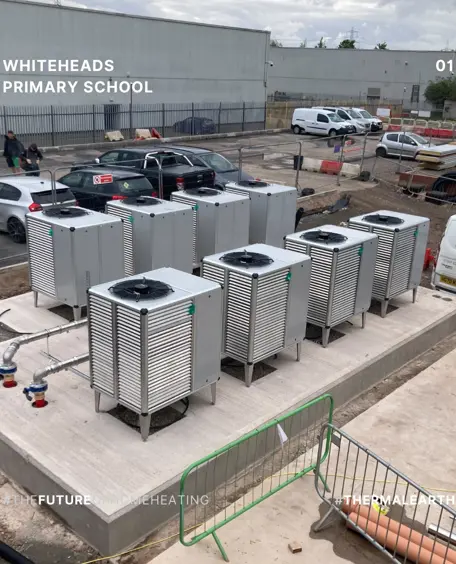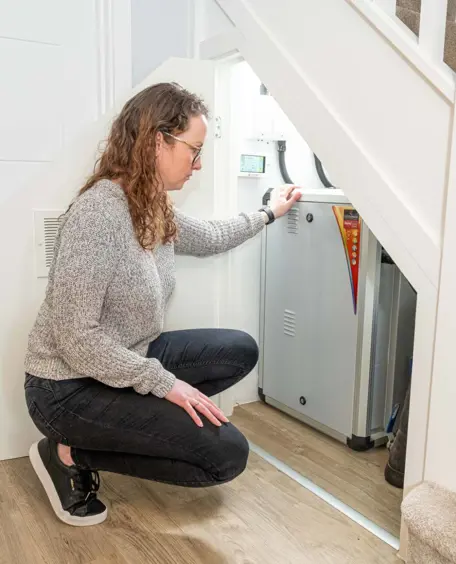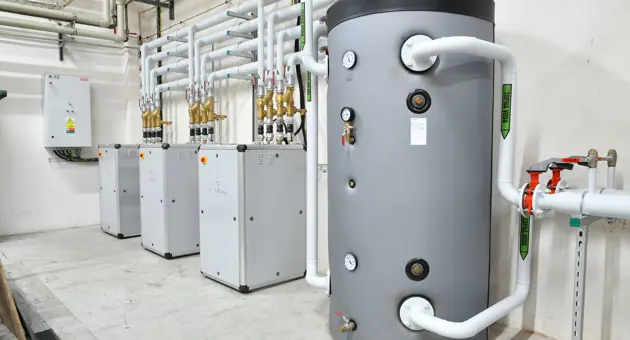Installation of modern heat pumps in a cascade promises quiet operation, smooth regulation, long lifespan, and easy maintenance a good example is the installation in Řež near Prague, carried out by the czech manufacturer Master Therm and the installation company Instamont-inpra.
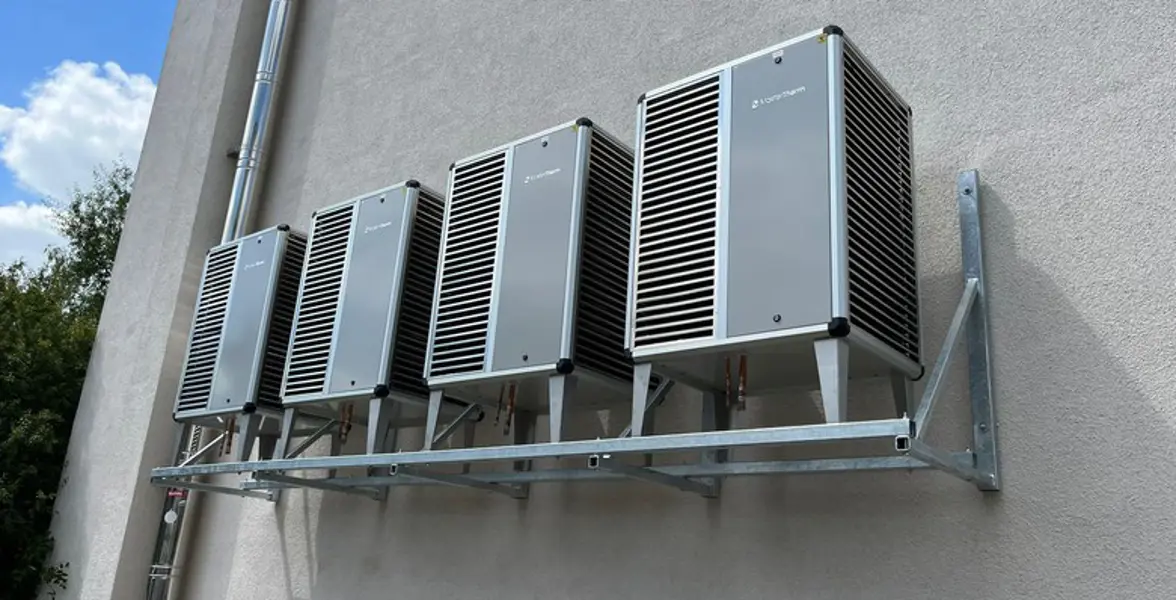
Cascade of 4 Heat Pumps Smartly Placed on the Side Wall of the Building
Heat pumps are a suitable solution for heating and hot water not only in family homes and commercial buildings, but also in apartment buildings. Even in this context, this renewable energy source can significantly reduce operating costs, and an undeniable advantage for the future is the building’s independence from fossil fuels. Heat pumps provide reliable heating and hot water all year round.
"Many customers are hesitant about heat pumps because they’ve previously encountered large, noisy units whose performance still failed to meet the building’s needs. However, both of these issues are addressed by installing modern heat pumps in a performance cascade, which offers quiet operation, smooth regulation, long service life, and easy maintenance. Ultimately, this means comfort and economic benefits for the residents,” says David Liška, Head of Sales for Master Therm heat pumps in the Czech Republic.
Surprisingly Discreet, Yet Powerful Solution for an Apartment Building with a Heat Loss of 100 kW
Although the apartment building in Řež required the installation of a cascade of four heat pumps due to its energy demands, their placement on the side wall meant that the roof—commonly used for such installations—remained free. The building blends in with the neighborhood, standing out only with a two-story rooftop extension that the homeowners’ association added years ago.
The subtle side installation was made possible by choosing split-type heat pumps BA60IS from the BoxAir Inverter Split series by Master Therm, each with a capacity of up to 35 kW. Arranged in a cascade, they provide a total output of 140 kW (A7W35)—more than enough for a building with a heat loss of 100 kW.
The outdoor units are compact, mounted on the wall using special brackets, and thanks to the absence of compressors, are very quiet, lightweight, and vibration-free. Their elevated placement also protects them from vandalism or theft and removes the need for ground space.
The second part of the system—the heart of the pump with electronic controls, compressors, and hot water tanks—is located inside the original gas boiler room. The installation includes:
- Two 1000-liter hot water tanks
- A buffer expansion unit
- A demineralization unit for water treatment
- A heating circuit distributor with mixing valves for temperature balancing
Sensitive and expensive components are thus shielded from external conditions, positively impacting both service life and serviceability. The connection between the indoor and outdoor units is formed by the low-pressure, cold side of the refrigerant circuit.
Cascade Installation Promises High Output and Savings
The key benefit of linking multiple heat pumps in a cascade is that the system can be precisely sized for the residents' needs. This optimizes each unit’s performance, reduces noise, and extends equipment life.
“Thanks to the ability to connect up to 16 units in a cascade and control them using Master Therm’s software, we can reach outputs of up to 800 kW with standard air-to-water heat pumps—sufficient for an entire residential block. For this building, four units were enough. They perform excellently due to our emphasis on smooth power regulation both within individual pumps and across the whole cascade. And since we set the parameters ourselves, as the manufacturer, there’s no risk of disturbing the residents,” notes David Liška from Master Therm.
The installation was completed by Instamont-inpra s.r.o., represented by Roman and Václav Řehoř, who handled everything from design documentation to establishing a new power connection and installing a meter panel with indirect metering, including all electrical and heating work.
“This is an increasingly popular solution for apartment buildings, including prefab blocks. These systems take full advantage of modern heat pump technology: quiet and efficient operation, independence from gas or central heating and its volatile prices, and convenience without having to deal with chimney or gas system inspections. The systems come with remote control via a mobile app. HOA chairpersons really appreciate that,” says Roman Řehoř, director of Instamont-inpra.
“With a cascade setup, the building also gains heating reliability: if one unit fails, the remaining three can handle most of the demand until service arrives. Residents won’t be left cold or without hot water. We offer on-site visits and consultations for all our cascade installations in apartment buildings,” adds Řehoř.
Goal: Reduce Energy Use for Heating by Two-Thirds—Or Even More in the Future
Investing in heat pumps can cut energy consumption in apartment buildings by up to two-thirds. The savings can pay back the initial investment within 7–8 years, after which residents can continue benefiting for another 10 or more years. The typical lifespan of high-quality heat pumps is around 20 years.
“We’ve been selling heat pumps for 30 years and developing and manufacturing our own for over 20. Many of those early units are still in use today, which we continue to service and maintain in excellent condition. That reliability and longevity are why heat pumps are such a smart and economical investment,” adds David Liška of Master Therm, the Jablonec-based manufacturer.
The combination of savings, longevity, and independence makes heat pumps ideal for apartment buildings looking for efficient, eco-friendly heating solutions. The HOA in Řež is already considering further investments, including photovoltaic panels. Paired with heat pumps, these would cover most of the domestic hot water needs in summer with zero operating costs.
“Few people realize that hot water preparation accounts for a significant portion of a building’s total energy use—in summer, it’s often the majority. That’s why the potential savings with Master Therm heat pumps are often a very pleasant surprise for HOAs,” Liška concludes.
Green and Efficient: Heat Pumps for the Future
Master Therm heat pumps are designed to deliver both cost savings and sustainability. By using air as a heat source, they reduce reliance on fossil fuels and cut greenhouse gas emissions. Thanks to EVI (Enhanced Vapor Injection) technology, they achieve high efficiency even in harsh conditions and can supply output water temperatures up to 64 °C, which is essential for buildings like hospitals or schools.

